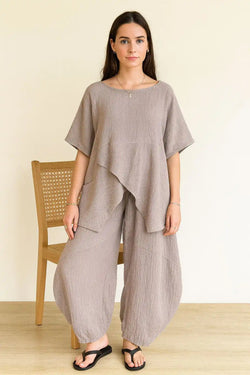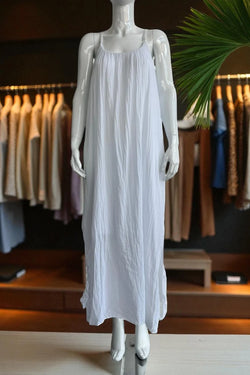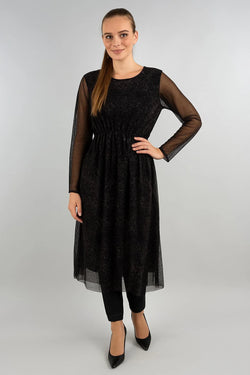You have seen how shopping looks different now, right? Selling has taken a new turn too. A lot of boutique owners run amazing fashion businesses straight from home. Now, they use online platforms, take orders on social media, and deliver locally. It all started with smartphones and social apps. Now it’s picking up speed all over the UK. Places like Didsbury and Altrincham are great examples. So, they choose smart stock, keep their customers happy, and grow without taking big risks.
Moreover, new sellers want control. They want low costs, flexible hours, and real profits. A home-based fashion business gives all three. So what’s making it work? How are people starting small and scaling up?
Let’s go through it in detail.
Home-Based Fashion Businesses Are on The Rise in The UK?
More boutique owners now run fashion businesses from home. In fact, it's one of the fastest-growing models in the UK. The setup stays lean—no retail rent, no showroom costs. A spare room, a few rails, and a phone are often enough to get started.
Social media drives most of the sales. Platforms like TikTok and Instagram bring in daily buyers. One reel can create ten orders. Direct messages replace shop floors. As a result, sellers test trends faster and engage with customers in real time.
Moreover, new tools support this model. Platforms like TikTok Shop and Shopify help sellers launch quickly and stay organised. Everything runs from a phone—product uploads, payments, and deliveries.
Now, what does this mean for you?
The pace of buying has changed. Trends shift by the week, not the season. Stock needs to turn fast. Low-risk, ready-to-sell pieces support that demand. Sharp photography, easy care tags, and frequent new arrivals help maintain momentum.
So, home-run boutiques now look for more flexible wholesale options. Faster dispatch, lower minimums, and responsive supplier service make a big difference. In fact, many of our top buyers work this way—no shopfront, but steady orders every week.
In short, home-based fashion is no more a side trend. It’s a strong channel and it’s shaping how the most agile UK boutiques buy and sell today.
So, How to Start a Small Clothing Business From Home?
See, running a clothing business from home is now one of the most popular ways to enter fashion retail. It saves money, gives you full control, and fits around your daily life. But to make it work, you need a clear plan.
Let’s break it down step by step.
Step 1: Pick What You Want to Sell
Start by choosing your clothing styles as this makes it easier to find the right stock and talk to the right buyers. You should think about who you want to sell to—young women, working mums, or casual everyday wear?
Popular choices for home-based sellers:
- Everyday womenswear
- Occasion or party outfits
- Loungewear and relaxed styles
-
Seasonal trends (like summer dresses or winter knits)
Step 2: Find a Good Wholesale Supplier
Your supplier is the key to your success. You need quality, reliability, and fast delivery. Look for wholesalers based in the UK who work well with small sellers.
A good supplier like us at Milan Clothing should offer:
- No high minimum orde
- Fast UK shipping
- On-trend clothing
-
Support for repeat buyers
You must take time to check return policies and restock options. After all, a strong wholesale partner is exactly who can help you grow.
Step 3: Set Up Your Online Shop
Once you have stock, you need a way to sell it. Many home-based sellers use simple online tools.
Popular options:
- Shopify – build a full website with product page
- TikTok Shop – connect directly with short videos
-
Instagram and Facebook – post products and sell in DMs or through shop features
You can start with one platform and expand later.
Step 4: Create a Small Brand Look
Now make your shop feel real and reliable. Choose a short, easy name. Design a logo or use a free tool online. Use the same colours and style across your posts and packaging.
You’ll see how this helps people remember you.
Step 5: Organise Your Space
Even a spare room can work well. You need space to:
- Store clothing neatly
- Steam or fold items
- Take clean photos
-
Pack and ship orders
Use hangers, baskets, and boxes. A small rail can display your top pieces.
Step 6: Price Your Clothing
Make sure you earn a profit from each sale. Check your wholesale price and add enough to cover your work.
Think about:
- Packaging costs
- Delivery costs
-
Time spent packing and replying to customers
Keep prices fair but don’t undervalue your time.
Step 7: Share Your First Drop
Start with a small launch. Pick 10 to 15 pieces and take strong photos. If possible, wear the clothes in your pictures or ask a friend to model them.
Post daily to:
- Show how the items look
- Explain how to style them
-
Offer price and delivery details
Step 8: Pack and Send Orders
Once people start buying, pack each order carefully. Use tissue, bags, and thank-you notes to create a nice unboxing experience.
Be sure to:
- Send items quickly
- Reply to messages kindly
-
Keep track of each sale
Fast service builds trust and repeat business.
Step 9: Keep Track of What Works
Look at your sales each week. Make sure to write down what sells fast and what doesn’t move.
You should use this info to:
- Reorder bestsellers
- Try new styles
-
Improve your next launch
Remember that you don’t need big stock—you need the right stock.
Step 10: Keep Going
Post daily, stay in touch with your followers, and offer new styles often.
Even a small page can grow with regular updates and personal service.
Over time, your brand will feel trusted and loved. That’s when your home business really takes off.
What Makes Product Styling and Photos Help Sell Faster?
Photos help you sell. In fact, most people decide fast after seeing one picture. A clean photo builds trust. A styled outfit tells a clear story. Now think about your buyer. They want to see how the top fits. They want to check the length of the dress. They want to know if it suits their body. Use natural light. Stand near a window. Pick a plain wall. Make sure the clothes stay in focus.
In fact, show the full front view. Then show the side. Take a back view if needed. Add one close-up to show fabric and colour. Moreover, style the look. Match a soft jumper with wide trousers. Add a bag or necklace. Use easy pieces that buyers already wear. You do not need a model. Use a hanger or a mannequin. You can wear the item yourself and take the photo with a phone.
One more thing is that you need to write a short caption. Add size notes and fabric info. Say what UK sizes it fits. Share how to wash or care for the item. Your post looks ready. Buyers feel sure. They scroll, stop, and shop. A good photo often leads to a fast sale.
Essentials to Have Before Your First Launch
- ➔ Prepare your product list first. Pick 10 to 15 pieces that fit your audience. Use items that style well together.
- ➔ Set up your workspace. Use shelves or rails to keep items in order. Store everything in a clean, dry place.
- ➔ Sort your packing tools. Keep tissue, bags, tags, and thank-you cards in reach. Make sure each parcel looks neat.
- ➔ Plan your selling platform. Choose how buyers will place orders. Instagram, WhatsApp, or a small online shop all work well.
- ➔ Set your delivery method. Pick a courier you can trust. Have labels, pens, and tape ready before you begin.
- ➔ Need to write clear return steps. Keep the policy short and easy to follow. Place the note inside each parcel.
- ➔ Check your photos and pricing. Show each item clearly. Keep your descriptions simple and useful.
- ➔ Your launch feels smooth and ready. Buyers see a shop they can trust from the start.
Red Flags to Avoid When Working with Wholesalers
Pick your wholesaler with care. The right one helps your shop grow. The wrong one can cause problems. Start by checking contact info. A real wholesaler shows a phone number, email, and full address. Clear details build trust. Now look at their prices. Fair prices stay steady. Sudden changes may hurt your profit.
In fact, check the fabric info. Good sellers name the fabric and weight. Clear labels help you choose better stock. In fact, strong suppliers do not rush you. Fake deals or last chance tags on every item show pressure. Take your time. Look at how often they add new styles. A fresh collection shows they plan ahead. Old stock for weeks may mean weak supply.
Moreover, check the packaging. Clothes should arrive clean and folded. Tags and labels should be in place. Ask about damage rules. A clear plan for returns saves time. It also protects your money. Fit matters. One-size should match UK sizes. A bad fit leads to poor feedback. So, spotting these signs early helps you avoid risk. You sell better, serve your buyers well, and build your shop with care.
Final Words
You now have a clear path. You know what to prepare, what to look for, and how to begin. A home-based clothing shop can grow with the right steps. In fact, the first launch sets the tone for everything that comes after. A focused start helps you stay in control. Now it’s time to take action. Set your date. Gather your pieces and choose your platform. Start small, but start with purpose. Moreover, keep learning as you go. Track what sells, what fits, and what brings buyers back. Listen to feedback. Adjust your collection with care.
You build more than a business. You shape a brand buyers trust. Each choice adds value. Each order moves you forward. Let your first drop be the start of something strong. Your boutique journey begins at home—but it does not stop there.




